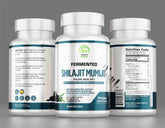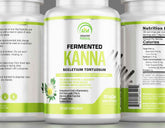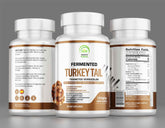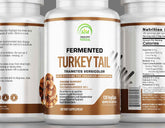Iron Deficiency and Anemia
How to Prevent and Treat Iron Deficiency Anemia Effectively
Iron deficiency and anemia are significant public health issues affecting millions of people worldwide. Iron is an essential mineral that plays a critical role in various bodily functions, most notably in the formation of hemoglobin, the protein in red blood cells responsible for carrying oxygen throughout the body. Anemia, particularly iron deficiency anemia, arises when the body lacks sufficient iron to produce adequate levels of hemoglobin, leading to various health problems. This blog will delve into the causes, symptoms, diagnosis, treatment, and prevention of iron deficiency and anemia, providing a comprehensive understanding of these conditions and their impact on health.
Understanding Iron Deficiency and Anemia
What is Iron Deficiency?
Iron deficiency occurs when the body's iron stores are depleted, leading to insufficient iron to meet the body's needs. Iron is vital for several physiological functions, including:
- Hemoglobin Formation: Essential for oxygen transport in the blood.
- Myoglobin Production: A protein that supplies oxygen to muscles.
- Enzyme Function: Important for various enzymatic reactions, including energy production and DNA synthesis.
- Immune System Support: Crucial for maintaining a healthy immune response.
What is Anemia?
Anemia is a condition characterized by a decrease in the number of red blood cells or hemoglobin concentration below normal levels, leading to reduced oxygen delivery to tissues and organs. There are several types of anemia, but iron deficiency anemia is the most common.
Types of Anemia
- Iron Deficiency Anemia: Caused by insufficient iron intake or absorption, leading to reduced hemoglobin production.
- Vitamin Deficiency Anemia: Caused by deficiencies in vitamins such as B12 or folate, essential for red blood cell production.
- Hemolytic Anemia: Caused by the destruction of red blood cells faster than they can be produced.
- Aplastic Anemia: A rare condition where the bone marrow fails to produce enough red blood cells.
- Sickle Cell Anemia: A genetic disorder leading to abnormal hemoglobin structure, causing red blood cells to assume a sickle shape.
Causes of Iron Deficiency
Iron deficiency can result from various factors, including inadequate dietary intake, increased iron requirements, impaired absorption, and chronic blood loss.
Inadequate Dietary Intake
Iron deficiency can occur when dietary iron intake is insufficient to meet the body's needs. This can happen due to:
- Poor Diet: Diets low in iron-rich foods, such as red meat, poultry, fish, beans, and fortified cereals.
- Vegetarian or Vegan Diets: Plant-based diets may lack adequate heme iron, the more easily absorbed form of iron found in animal products.
- Malnutrition: Insufficient overall nutrient intake can lead to iron deficiency.
Increased Iron Requirements
Certain life stages and conditions increase the body's iron requirements, leading to a higher risk of deficiency:
- Pregnancy: Increased blood volume and fetal development require more iron.
- Infancy and Childhood: Rapid growth periods demand higher iron levels.
- Adolescence: Increased iron needs during growth spurts and menstruation in girls.
- Intense Physical Activity: Athletes may require more iron due to increased red blood cell turnover and muscle demands.
Impaired Iron Absorption
Iron absorption can be hindered by several factors:
- Gastrointestinal Disorders: Conditions such as celiac disease, Crohn's disease, and ulcerative colitis can impair iron absorption.
- Surgery: Gastric bypass surgery and other intestinal surgeries can reduce the area available for iron absorption.
- Medications: Certain medications, such as proton pump inhibitors (PPIs), can reduce stomach acid and impair iron absorption.
- Dietary Inhibitors: Consuming foods or drinks high in calcium, polyphenols (in tea and coffee), and phytates (in grains and legumes) can inhibit iron absorption.
Chronic Blood Loss
Chronic blood loss is a significant cause of iron deficiency, as it depletes the body's iron stores over time:
- Menstruation: Heavy menstrual bleeding (menorrhagia) can lead to significant iron loss in women.
- Gastrointestinal Bleeding: Conditions such as ulcers, hemorrhoids, and colorectal cancer can cause chronic blood loss.
- Frequent Blood Donation: Regular blood donors may experience iron deficiency if they do not replenish their iron stores adequately.
Symptoms of Iron Deficiency and Anemia
The symptoms of iron deficiency and anemia can vary depending on the severity of the condition. Common symptoms include:
General Symptoms
- Fatigue and Weakness: Due to reduced oxygen delivery to tissues.
- Pale Skin: Caused by decreased red blood cell production.
- Shortness of Breath: Particularly during physical activity.
- Dizziness or Lightheadedness: Due to decreased oxygen supply to the brain.
- Cold Hands and Feet: Resulting from poor blood circulation.
Specific Symptoms
- Brittle Nails and Hair Loss: Indicating insufficient oxygen supply to hair and nail cells.
- Restless Legs Syndrome: An uncomfortable urge to move the legs, often associated with iron deficiency.
- Chest Pain or Heart Palpitations: Due to the heart working harder to deliver oxygen.
- Pica: Craving non-nutritive substances like ice, dirt, or clay, commonly seen in severe iron deficiency.
- Headaches: Resulting from reduced oxygen supply to the brain.
Diagnosis of Iron Deficiency and Anemia
Accurate diagnosis of iron deficiency and anemia involves a combination of medical history, physical examination, and laboratory tests.
Medical History and Physical Examination
The healthcare provider will take a detailed medical history to identify potential causes of iron deficiency and anemia, including:
- Dietary Habits: Assessment of iron intake and dietary patterns.
- Menstrual History: Evaluation of menstrual blood loss.
- Gastrointestinal Symptoms: Inquiry about symptoms like bleeding, pain, and changes in bowel habits.
- Chronic Conditions: Identification of conditions affecting iron absorption or causing blood loss.
- Medications: Review of medications that may interfere with iron absorption or increase bleeding risk.
Laboratory Tests
Laboratory tests are essential for diagnosing iron deficiency and anemia:
- Complete Blood Count (CBC): Measures the levels of red blood cells, hemoglobin, hematocrit, and other blood components. Low hemoglobin and hematocrit levels indicate anemia.
- Serum Ferritin: Measures the body's iron stores. Low ferritin levels suggest iron deficiency.
- Serum Iron: Measures the amount of iron in the blood.
- Total Iron-Binding Capacity (TIBC): Indicates the maximum amount of iron that can be bound by proteins in the blood. High TIBC suggests iron deficiency.
- Transferrin Saturation: Reflects the percentage of transferrin (the iron-transport protein) that is saturated with iron. Low transferrin saturation indicates iron deficiency.
- Reticulocyte Count: Measures the number of young red blood cells in the blood. A low reticulocyte count may indicate inadequate red blood cell production.
Additional Tests
In some cases, additional tests may be necessary to identify the underlying cause of iron deficiency and anemia:
- Stool Occult Blood Test: Detects hidden blood in the stool, indicating gastrointestinal bleeding.
- Endoscopy: Visual examination of the gastrointestinal tract to identify sources of bleeding.
- Colonoscopy: Examination of the colon and rectum to detect polyps, cancer, or other sources of bleeding.
- Bone Marrow Aspiration and Biopsy: In rare cases, these procedures may be performed to evaluate bone marrow function and rule out other causes of anemia.
Treatment of Iron Deficiency and Anemia
Treatment for iron deficiency and anemia focuses on replenishing iron stores, addressing the underlying cause, and managing symptoms. The approach may involve dietary changes, iron supplements, and medical interventions.
Dietary Changes
Incorporating iron-rich foods into the diet is a fundamental step in treating and preventing iron deficiency. There are two types of dietary iron: heme and non-heme iron.
Heme Iron
Heme iron is found in animal products and is more readily absorbed by the body:
- Red Meat: Beef, lamb, and pork.
- Poultry: Chicken, turkey, and duck.
- Fish and Shellfish: Salmon, tuna, shrimp, and oysters.
- Organ Meats: Liver and kidneys.
Non-Heme Iron
Non-heme iron is found in plant-based foods and is less efficiently absorbed:
- Legumes: Beans, lentils, chickpeas, and peas.
- Dark Leafy Greens: Spinach, kale, and Swiss chard.
- Whole Grains: Brown rice, quinoa, and fortified cereals.
- Nuts and Seeds: Almonds, cashews, and pumpkin seeds.
- Dried Fruits: Raisins, apricots, and prunes.
Enhancing Iron Absorption
Certain dietary practices can enhance the absorption of non-heme iron:
- Vitamin C: Consuming vitamin C-rich foods (e.g., citrus fruits, strawberries, bell peppers) with iron-rich meals can increase iron absorption.
- Avoiding Inhibitors: Limiting intake of iron absorption inhibitors, such as calcium-rich foods, tea, coffee, and high-phytate foods, during iron-rich meals.
Iron Supplements
Iron supplements are often necessary to treat iron deficiency and anemia, especially when dietary changes alone are insufficient. There are various forms of iron supplements available, including:
Oral Iron Supplements
Oral iron supplements are the most common treatment for iron deficiency and anemia:
- Ferrous Sulfate: One of the most commonly used forms.
- Ferrous Gluconate: Often used for individuals with gastrointestinal sensitivity.
- Ferrous Fumarate: Contains a higher concentration of elemental iron.
Dosage and Administration
The typical dosage for oral iron supplements is 100-200 mg of elemental iron per day, divided into two or three doses. It is important to follow the healthcare provider's instructions regarding dosage and duration of treatment.
Side Effects
Common side effects of oral iron supplements include:
- Gastrointestinal Issues: Constipation, nausea, and stomach cramps.
- Dark Stools: A common and harmless side effect of iron supplementation.
- Metallic Taste: Some individuals may experience a metallic taste in the mouth.
Intravenous Iron
In cases where oral iron supplements are ineffective or not well-tolerated, intravenous (IV) iron therapy may be administered. IV iron is typically reserved for individuals with severe iron deficiency anemia, malabsorption issues, or chronic kidney disease.
Medical Interventions
Addressing the underlying cause of iron deficiency is crucial for effective treatment:
Managing Chronic Blood Loss
- Menstrual Bleeding: Hormonal treatments, such as oral contraceptives, can help reduce heavy menstrual bleeding.
- Gastrointestinal Bleeding: Treating conditions such as ulcers, hemorrhoids, or gastrointestinal cancers can stop chronic blood loss.
- Surgery: In some cases, surgical intervention may be necessary to address sources of bleeding.
Treating Malabsorption Disorders
Managing underlying gastrointestinal disorders that impair iron absorption is essential:
- Celiac Disease: Following a strict gluten-free diet can improve iron absorption.
- Inflammatory Bowel Disease: Managing Crohn's disease or ulcerative colitis with medication can enhance nutrient absorption.
Blood Transfusions
In severe cases of anemia with dangerously low hemoglobin levels, blood transfusions may be necessary to rapidly increase red blood cell count and improve oxygen delivery to tissues.
Prevention of Iron Deficiency and Anemia
Preventing iron deficiency and anemia involves a combination of dietary strategies, lifestyle changes, and regular monitoring.
Dietary Strategies
- Balanced Diet: Consuming a well-balanced diet that includes both heme and non-heme iron sources.
- Fortified Foods: Including iron-fortified cereals, bread, and other foods in the diet.
- Vitamin C Intake: Enhancing non-heme iron absorption by pairing iron-rich foods with vitamin C-rich foods.
- Limit Inhibitors: Reducing the intake of foods and beverages that inhibit iron absorption during iron-rich meals.
Lifestyle Changes
- Regular Medical Check-Ups: Routine health check-ups to monitor iron levels and overall health.
- Managing Menstrual Health: Women with heavy menstrual bleeding should seek medical advice to manage and reduce blood loss.
- Avoiding Excessive Blood Donation: Limiting the frequency of blood donations to allow the body to replenish iron stores.
Regular Monitoring
- Blood Tests: Regular blood tests to monitor hemoglobin, ferritin, and other relevant markers.
- Follow-Up Appointments: Scheduling follow-up appointments with a healthcare provider to assess the effectiveness of treatment and make necessary adjustments.
Special Considerations
Pregnancy
Pregnant women are at higher risk of iron deficiency and anemia due to increased iron demands for fetal development and increased blood volume. Prenatal vitamins containing iron are often recommended to prevent deficiency.
Infants and Children
Infants and children have higher iron needs due to rapid growth. Breastfed infants may require iron supplementation after six months of age, while formula-fed infants should receive iron-fortified formula.
Vegetarians and Vegans
Vegetarians and vegans may have a higher risk of iron deficiency due to lower intake of heme iron. It is important for them to consume a variety of plant-based iron sources and enhance absorption through dietary practices.
Conclusion
Iron deficiency and anemia are prevalent conditions that can significantly impact health and quality of life. Understanding the causes, symptoms, diagnosis, treatment, and prevention of these conditions is essential for effective management and prevention.
By incorporating iron-rich foods into the diet, utilizing iron supplements when necessary, addressing underlying causes, and making lifestyle changes, individuals can effectively manage and prevent iron deficiency and anemia. Regular monitoring and consultation with healthcare providers are crucial to ensure optimal iron levels and overall health.
Remember, early detection and intervention are key to preventing the complications associated with iron deficiency and anemia. By taking proactive steps, you can maintain healthy iron levels and support your body's vital functions.
Calcium and Bone Density: A Comprehensive Guide
This comprehensive blog explores the importance of calcium for bone health, the factors affecting bone density, dietary sources, supplements, recommended dosages, potential side effects, and practical tips for incorporating calcium into your diet..
- Choosing a selection results in a full page refresh.








